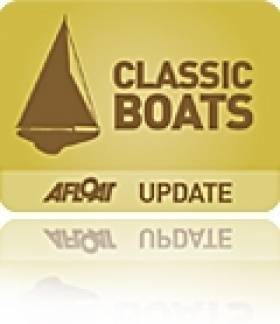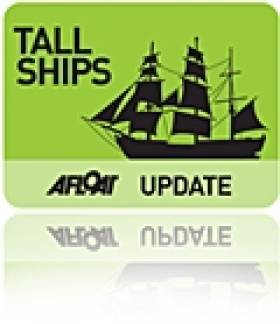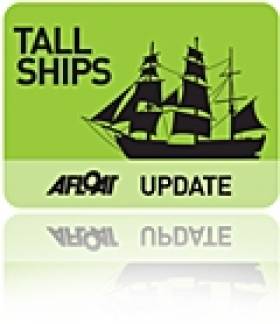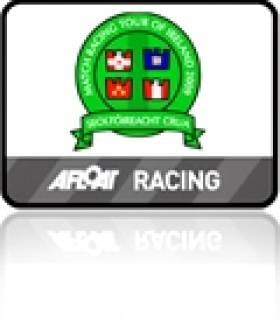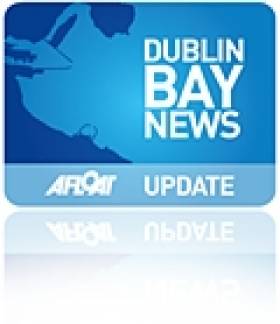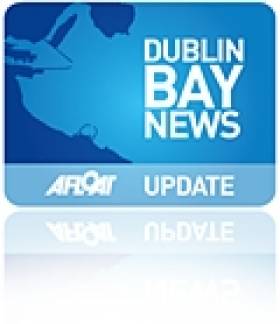Displaying items by tag: Dublin
O'Leary and Burrows Lie Fourth at Bacardi Cup
Peter O'Leary and David Burrows lie fourth overall at the halfway stage of the Star class Bacardi Cup in Miami today having posted a 7, 2 and 5 in the 93-boat fleet. Promisingly for the Cork-Dublin duo their top results have also been achieved across the wind range, a fact that must bode well for the remaining three races of the series on Biscayne Bay. Full Results HERE. A podcast with Olympic team manager James O'Callaghan is below:
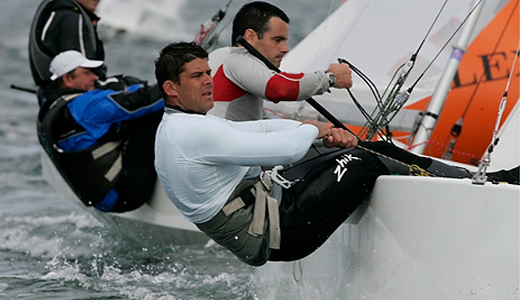
Peter O'Leary and David Burrows - fourth at the half way stage of the Bacardi Cup. Photo: Ingrid Abery. More HERE
Boat Jumbles for Dun Laoghaire, Howth and Carrickfergus
If you fancy a rummage through a Bosun's locker then boat Jumble sales on three consecutive weekends and at three separate locations will satisfy all bargain hunters when the Irish boating season kicks off in a fortnight's time.
Each show is offering a range of boating, sailing and water sports equipment and accessories. There are new and used pitches and some familiar trade names in addition to second hand boats/dinghies and nautical “car boot” items.
The first opens on March 27th – the weekend when the clocks go forward – and it takes place on the Carlisle Pier in Dun Laoghaire Harbour from 10am to 4pm.
The next is across Dublin Bay when the RNLI stage a boat jumble at Howth Yacht Club on Saturday 2nd April from 10.30am to 1.30pm.
The last show is at Carrickfergus on Belfast Lough and this 'Irish Boat Jumble' is being promoted as the 'biggest' in Ireland. The Antrim show will be on Sunday 10th April starting at 10am.
All are offering economical rates and friends are being encouraged to team up and pool their surplus gear and share the selling task!
Unique footage of 1926 Dun Laoghaire Regatta Uncovered
Here's a unique glimpse of a post World War One Dun Laoghaire Regatta in rare newsreel recently archived by British Pathe (below). The shots taken on August 2nd 1926 show a mixture of long shots of yachts sailing across Dublin bay. There's definitely lovely shots of Dublin Bay 21s enjoying a tight race, a brave gybe by a Dublin Bay 25 at the harbour mouth plus shots of some Howth 17s.
There's panning shots of in harbour rowing races and high angled shots of men diving off the side of a boat and into the harbour. The swimmers race the length of an area cordoned off by rowing boats with spectators watching from the boats. There is also a shot of women's swimming race and some diving too.
We'd like your observations on these shots, particularly any details of the large committee boat dresssed overall. Leave your comments below. Enjoy.
Scroll down for the clip.
Tall Ship Interests Plan Replacement for Asgard II
Ireland could yet have a Tall ship to replace the Asgard II and the Lord Rank, if a new sailing group formed to press for a replacement is successful. The news is in this morning's Irish Times newspaper. Groups representating different interests from maritime to tourism to economic are getting together for a special conference on March 26th in Dublin Port. The full Irish Times story is HERE. Next week in Afloat magazine's March/April issue an article called 'Tall Order for Ireland' gives all the details on the conference. It includes a 'call for contributions' from key stakeholders who would support a Tall Ship for Ireland. More details HERE. And in a separate article WM Nixon looks at the realities of national sail training in the 21st Century. This new move on a replacement seems to have entirely appropriate timing; Asgard II was commissioned in Arklow 30 years ago this week, on March 7, 1981.
Looking for further reading on Tall Ships in Ireland? Click the links below:
Click this link to read all our Tall Ships Stories on one handy page
Previewing Ireland's Tall Ships 2011 Season
Can Ireland Get a New Tall Ship?
City Powerboat School on the Market
Due to an opportunity for its owners overseas Dublin City's only powerboat training school, City Powerboat School is on the market. The Irish Sailing Association recognised training establishment is advertised in next week's edition of Afloat magazine. The school operates in the 'highly visible' River Liffey area. School principal Felix Finlay says 'the position of the school in Dublin City has attracted many enquiries, for not only powerboat training courses, but sail training, tourism activities, and educational opportunities'. More here.
Dublin to Welcome Tall Ships into the Bay in August 2012
For the first time since 1998, Dublin City will welcome back sailing's International Tall Ships Races, presented by Szczecin, Poland. As final host port for the 2012 Tall Ship Races, the event will see up to 100 Tall Ships sail into Dublin for a four day Festival and celebration, from Thursday the 23rd August to Sunday 26th August, 2012. Ships from as far away as Chile, Mexico, Argentina, USA and European and Baltic countries including Italy and Norway will chart their course to Dublin.
Over 5000 participants will compete in these "experience of a lifetime" races and there will be opportunities for young trainees from Dublin to be selected to participate in the races. The event offers young people a unique setting for developing essential life skills like team building, leadership, multi-cultural understanding and friendship with participants from up to 50 countries taking part.
The Lord Mayor said, "The visit of the Tall Ships to Dublin will be the biggest event in Ireland in 2012. It will provide a major boost to all city businesses and will enhance Dublin's position as a major International event destination. It should be great fun for everyone, young and old".
The next 18 months will see opportunities for businesses to get involved in sponsorship of the event such as the Trainee Recruitment Programme. These magnificent ships will also take bookings for corporate hospitality and it is expected that 1.5 million visitors from home and abroad will attend a full programme of activity and entertainment for all ages during the festival.
Commenting at the launch of the Tall Ships 2012, Mr. Enda Connellan, Chair of the Tall Ships Steering Group said, "When Dublin last hosted the Tall Ships Races in 1998 it reminded us all of the rich history and close associations between the port and the city that has grown up around it. When the Tall Ships return in August next year they will be greeted by a significantly altered skyline that now includes the Samuel Beckett Bridge, Dublin Convention Centre, the Spire, the Grand Canal Theatre and the O2. One million citizens visited the Tall Ships festival then and I have no doubt that many more will experience the carnival atmosphere when these magnificent sailing ships return to Dublin in 2012"
The races in 2012 will visit the ports of St. Malo in France, Lisbon in Portugal, Cadiz and La Coruna in Spain, from where they will set sail on the last leg of their races to their final host port, Dublin.
Eamonn O'Reilly, CEO of Dublin Port Company that manages Dublin Port said, "I am delighted to welcome the Tall Ships Races to Dublin Port, Ireland's premier port. The Port handles 50% of all Ireland's imports and exports, making it a significant facilitator of Ireland's economy. In addition it welcomes 1.7 million tourists through the ferry companies operating there and 2010 saw an additional 130,000 tourists and crew from the 85 cruise ship calls to the Port "
Looking for further reading on Tall Ships in Ireland? Click the links below:
Click this link to read all our Tall Ships Stories on one handy page
Previewing Ireland's Tall Ships 2011 Season
Can Ireland Get a New Tall Ship?
Rejig Means No South Coast Match Racing Fixtures
There will be no match racing on the south coast this year following a rejig of the fixtures calendar.
After two years of expansion for match racing in terms of events the theme for 2011 is consolidation.
Changes to the ISA SailFleet schedule for the boats mean that we have had to go through a rejigging of the match racing calendar.
The major impact is that Royal Cork YC are to take the boats latter than originally hoped meaning that they will be unable to host a leg of the Tour.
With Kinsale not taking part in the SailFleet scheme this year that means no match racing on the south coast for the first time in a couple of years.
With no tie up with the Dun Laoghaire Festival of Cultures available this year a date of July 23rd and 24th has been settled on for the Ireland vs The World International.
The highlight of last year this event will once again pit Irelands 6 best match racers against 6 teams from the rest of the world. Once again National and Tour champion John Sheehy will captain the Irish team.
The Leinster Match Racing Open, to be hosted by the Royal Irish Yacht Club, has been moved to July 16th and 17th to allow it to act as qualification for the Irish team for the following weekend and to give Laura Dillion and the Gladiators (Sam Hunt, Paddy Blackley, Peter Bayly, Richard Murphy) competitive practice immediately before heading over to Poland to represent the country at the ISAF Nations Cup.
Howth Yacht Club's, Dublin Match Racing Open stays with a date of September 3rd and 4th before we head for Lough Derg and the Womens (October 15th and 16th) and Open National Championships (November 5th And 6th).
All of the above means that here will be no Munster Match Racing Open this year and work continues to find a host for the IUSA Student Match Racing Nationals with Galway a potential for early April. There has been considerable work on the cost of entry for events over the winter and the majority of events will have a basic entry of €330 this year. All events will be run at ISAF grade 3.
Revised calendar
July 16-17th – Leinster Match Racing Open, Royal Irish Yacht Club
July 23-24th – Ireland vs The World International, Royal St George Yacht Club
September 3rd and 4th – Dublin Match Racing Open, Howth Yacht Club
October 15th and 16th - Womens Match Racing Championships, Lough Derg Yacht Club
November 5th and 6th – National Match Racing Championships, Lough Derg Yacht Club
Dun Laoghaire Plans to Welcome 'Next Generation' Liners
A new masterplan to make Dun Laoghaire a port of call for the cruise liners of the future is on the cards, according to The Irish Times.
Gerry Dunne, chief executive of the Dun Laoghaire Harbour Company, said Ireland's east coast is in need of a facility to cater for cruise ships of the size currently being built.
Plans would involve excavating the harbour to a depth of 9.5 metres and building longer berths to accommodate ships that will reach more than 300 metres in length
Dunne said Dun Laoghaire needed to think about its future as the harbour's "lucrative contract" with Stena for its high-speed ferry service is due to expire in April.
The plans are supported by Dun Laoghaire-Rathdown County Council and the local chamber of commerce. No details of costs or funding of the project have yet been made available. The Irish Times has more on the story HERE.
As previously reported on Afloat.ie, the Dun Laoghaire Harbour Company has issued an invitation to tender for a new floating berth for cruise liners despite being refused permission to continue development of the Carlisle Pier site.
Stena Purchase Former Irish Sea Ferry
The Dublin Seaways, one of the two ro-pax sisters that served DFDS Seaways Dublin-Birkenhead route, which closed down last month, has been sold to Stena Line, writes Jehan Ashmore.
DFDS Seaways sold the 21,856grt vessel to Stena North Sea Line for €24m. Stena operate the Killingholme-Hoek van Holland and Harwich-Rotterdam routes though it remains uncertain as to where the 1997 built vessel will be allocated to or possibly chartered.
Only last month, Stena entered into an agreement that offers their freight customers to use DFDS Harwich-Esbjerg and Immingham-Esbjerg routes. In essence Stena buys freight capacity from DFDS vessels through a so called 'space-charter' arrangement. Stena will be marketing the routes under their own brand.
In the meantime the Dublin Seaways is temporary running on DFDS Seaways Rosyth-Zeebrugge route in a freight-only capacity. The Scottish-Belgium route ended taking passengers in mid-December. The North Sea route remains the only ro-ro freight service operating between Scotland and to the continental Europe.
The second ro-pax that served on the Irish Sea route, Liverpool Seaways made a final call to Dublin port on 31 January (click here for picture and related story) prior to sailing for Immingham. She subsequently sailed on a repositioning voyage to the Baltic Sea, initially to take up service on the Kiel-Klaipeda route though the vessel is due to switch to the Karlshamn-Klaipeda route from 21 February.
Liverpool Seaways will be reflagged to the Lithuania flag and will replace the existing route ro-pax vessel, Lisco Optima which transfers to the Kiel route. Incidentally the Lisco Optima (1999 / 25,206grt) like the former Irish Sea sisters was also built at the Visentini shipyard in Donada, Italy.
DFDS Seaways exit of the Irish Sea ferry market also included the closure of the freight-only Dublin-Heysham route served by the 13,704grt Anglia Seaways. It was expected that the vessel would be transferred also to the Baltic, but the vessel remains berthed in Avonmouth Docks.
Dublin Cycle Route Extension Put On Hold
The planned connection of Dublin's main coastal and canal cycling routes has been put on hold following "intensive lobbying", the Dublin Observer reports.
Planning permission had already been granted by Dublin Ciy Council for the completion of the €10m project to connect Portobello and the Grand Canal with East Wall Road via the Docklands.
But the council is now "re-evaluating" the section between Docklands and Fairview Park following complaints from East Wall residents, prompting the suspension of €4 million of funding by the Department of Transport.
Council officials and councillors have also apparently disagreed on what public consultation had happened with residents in the East Wall area regarding the cycle route.
Fine Gael Cllr Naoise Ó Muirí has argued that the "rationale for the strident opposition from within East Wall seemed pretty flimsy at best".
The Dublin Observer has more on the story HERE.





























